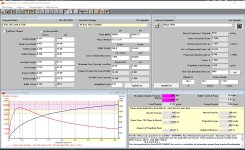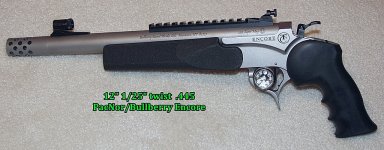My Speer #9
My Speer #9 used REAL guns in their tests. Who has a 10" anything?
Frustrated! I like to load my .38 Special and 357 magnum cartridges to a specific velocity range, and appreciate it when that information is readily available!
Reading through my latest Hodgdon "MORE LOADS THAN ANY OTHER MANUAL" paperback issue...it does have a great many loads with powders that I may want to investigate. BUT! The barrels of the test machinery are listed as either 7.7 or 10 inch. WHO in the Merrie Aitch can extrapolate from that information? I suppose it is useful for those shooting Thompson Center switch barrel guns, but not so much for the majority of us who have more "normal"guns with 2-6 1/2 inch barrels, and would like to have a faint idea of real world velocities of the published loads. Shooters of the Smith and Wesson 8 3/4" barreled revolvers may find some utility there. Lyman used to use vented barrels, probably on universal receivers, which was definitely helpful, and Speer manuals use (imagine that) real guns, and lists the make and barrel length! The Hornady hardback manual also gives better information, and although just a guide, they will bring a reloader closer to actual real world velocities. I will dig out my back issues of HANDLOADER magazine...they usually have good , usable information.
My Speer #9 used REAL guns in their tests. Who has a 10" anything?


